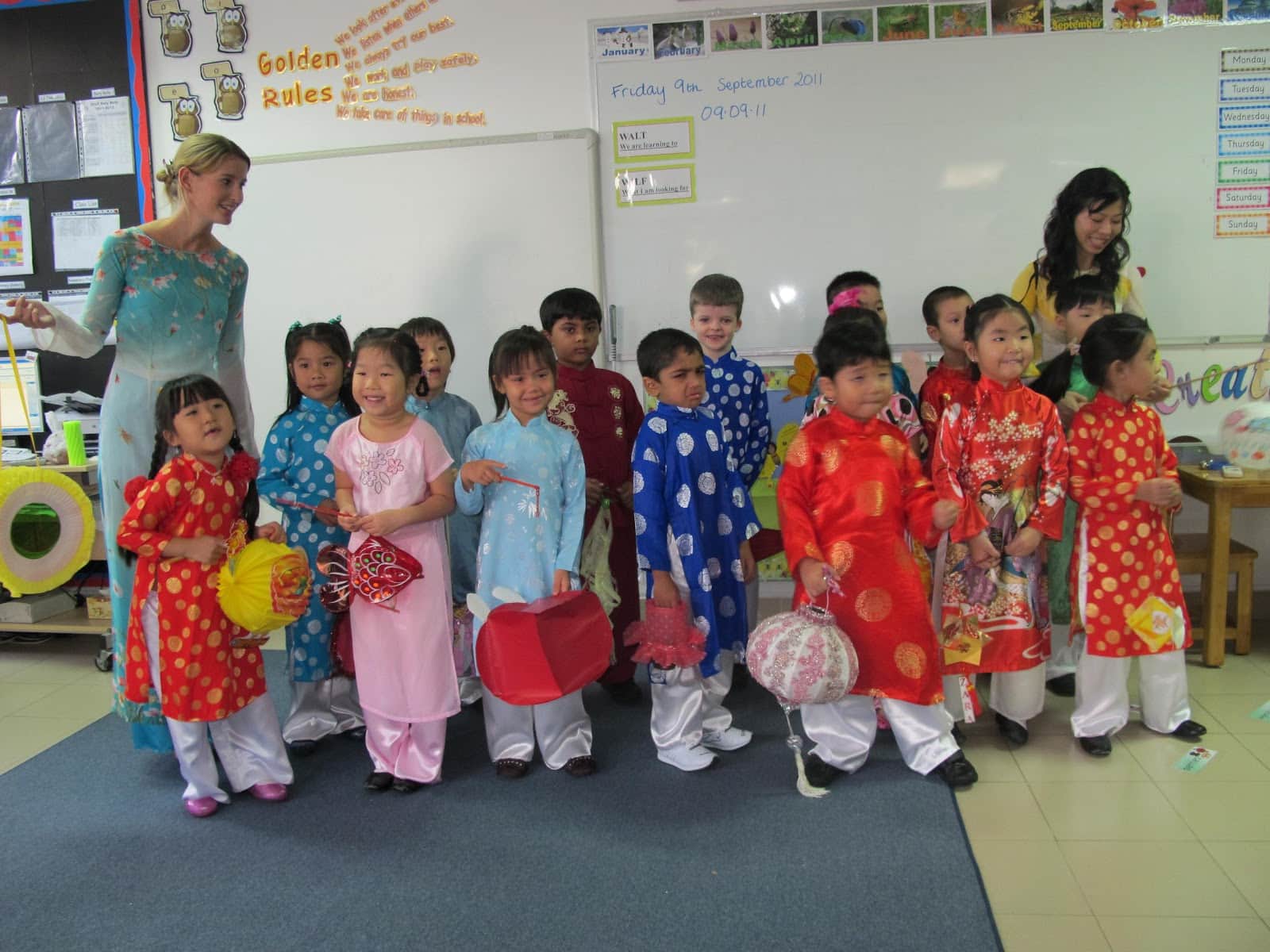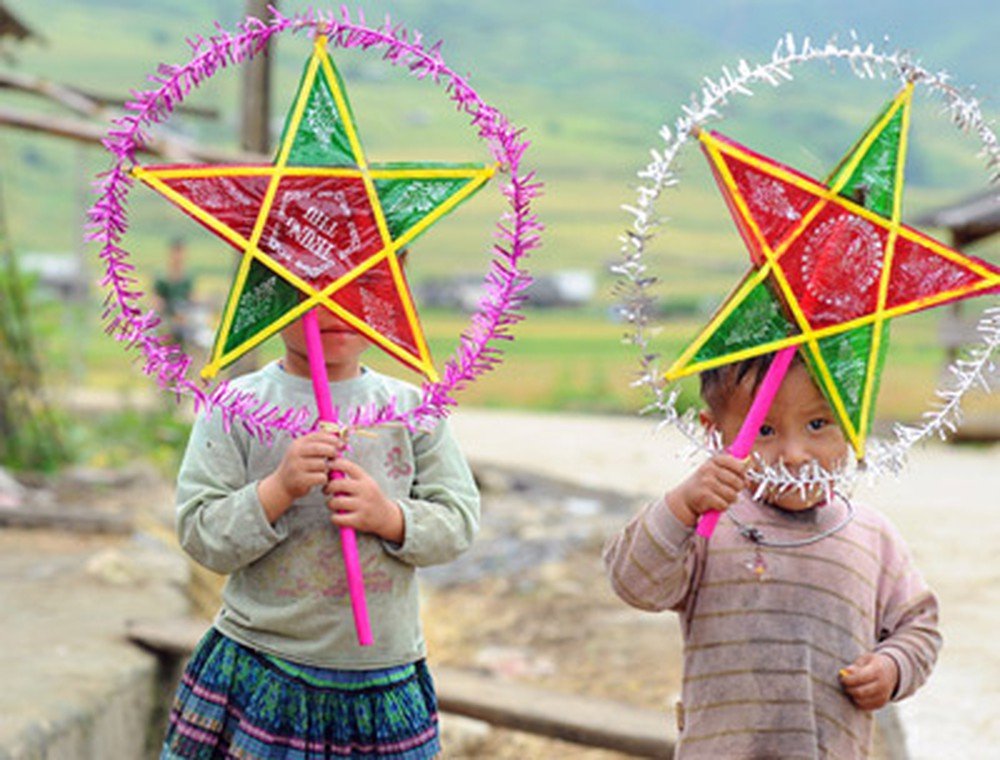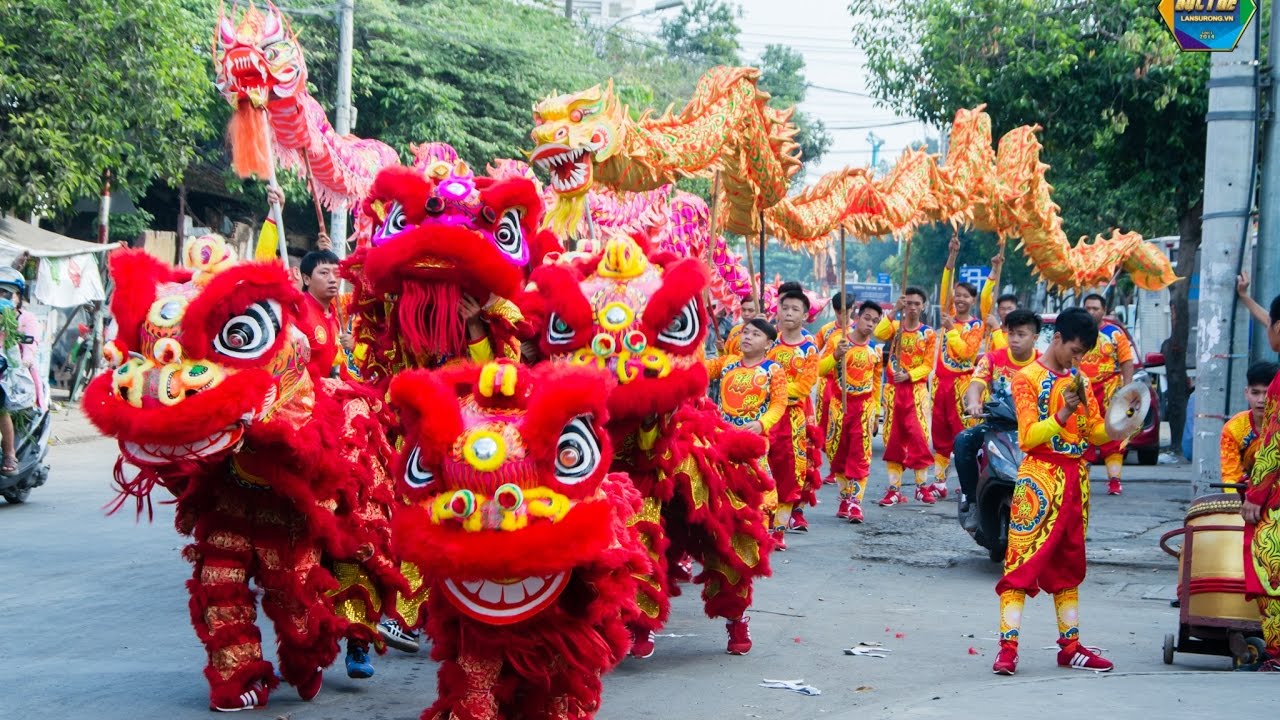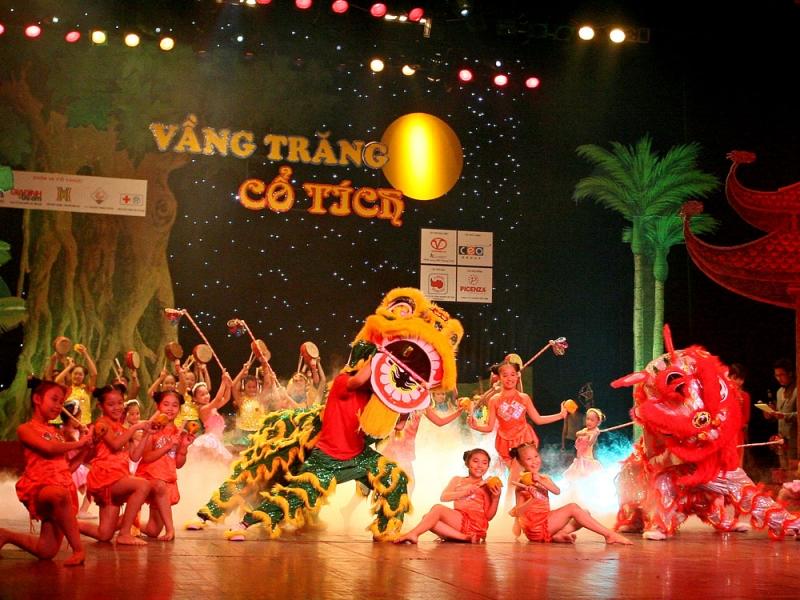Tet Trung Thu – the festival in the middle of autumn is very important to the Vietnamese people. It is called the Reunion Festival and it has an interesting story.
On this day, the moon is the biggest and everyone gathers around a tray. But we may not know much about this day. Let’s go back in time and learn about this Festival together. It happens on the full moon day of the eighth month of the Vietnamese lunar calendar.
This is when the moon is the brightest and most beautiful. People have just finished harvesting crops and started celebrating the full moon. Tet Trung Thu is also called Mid-Autumn Festival, Moon Festival or Mooncake Festival, Children’s Day, and Reunification Festival.

Table of Contents
History of Tet Trung Thu
For thousands of years, every autumn, people eagerly welcome the Mid-Autumn Festival on the 15th day of the 8th lunar month. Under the bright moonlight, they broke the conversation and wished for a peaceful life. But not everyone knows the origin and meaning of the “Tết Trung Thu”.
Many people say that the Vietnamese Mid-Autumn Festival originated in China, but in fact, when it comes to anecdotes, the Vietnamese and Chinese have different origins in the Mid-Autumn Festival.
According to the Chinese historical story of the Tang Dynasty, the origin of the Mid-Autumn Festival is associated with Duong Quy Phi. She was one of the four great beauties that made up the anecdote of China at that time.
It was also because of the beauty of tilting the city, that the courtiers said that she was enchanted by King Duong Huyen Tong, immersed in wine, and neglected the main court. Duong Huyen Tong was forced to give his pet concubine a white silk ribbon to strengthen the court in infinite mourning.
Because that unrelenting grief moved the fairies, on the night of the brightest moon of autumn, the king was taken to heaven to meet Duong Quy Phi again. After returning to earth, he set up the Mid-Autumn Festival to commemorate his beloved concubine.
If the Chinese people’s mid-autumn festival refers to the love story of Hang Nga and Hau Nghe, in Vietnam, it weaves the story of Uncle Cuoi and Hang.
In Chinese folklore, there is a legend of Hau Nghe – Hang Nga that explains the origin of the Mid-Autumn Festival. Accordingly, Hau Nghe was a commoner under King Yao who had the ability to live forever and was famous for his outstanding marksmanship.
Hang Nga is a maidservant in the palace of Tay Vuong Mau. During the time he came down to earth, he became predestined with Hau Nghe and became a husband and wife.
That year, the human world encountered a great disaster that rose 10 suns a day, the human world was like a pool of fire, and countless people died. Hau Nghe was ordered by King Yao to shoot down 9 suns.
After completing the order, he returned home and discovered that his wife, Hang Nga, had drunk the elixir and flown to the sky. The guy chased after him but couldn’t keep up.
Hang Nga flew to the moon and was locked there. Too sad he built a moon tower. Every year on the full moon day of mid-autumn, the moon is bright, clear, and closest to the ground. At this time, distant couples can be closer to each other.
Vietnamese people mention the legend of Uncle Cuoi and Hang Nga for Tet Trung Thu. Legend has it that on that high moon, there was a beautiful fairy called Hang Nga, and she was very weak and loved children.
One day, Ngoc Hoang held a cake-making contest on the full moon day. Hang Nga went down to the world to consult and meet Uncle Cuoi. Cuoi is a guy who is a liar but is a very good cook. Therefore, Cuoi is loved by children very much.
After that, Hang Nga asked Cuoi to make a cake. Cuoi loved to make cakes. Cuoi dropped the ingredients and made a delicious cake. After that, Hang Nga brought this cake to the contest, the cake was praised by everyone and was also rewarded by the Jade Emperor.
Cuoi loved her very much and did not want to leave her. So Cuoi followed her to the moon. But after a while, Cuoi missed home and missed the children so much that he sat crying under the banyan tree and looked down at the world.
Because of that, on the full moon day, the brightest moon day in autumn, Hang and Uncle Cuoi were allowed by Ngoc Hoang to fly down to Earth to play with the children. From then on, the Tet Trung Thu was also formed here.
According to Vietnamese history books, many documents record that the Tet Trung Thu was celebrated under the Ly dynasty in the Thang Long Citadel. It was the occasion that King Ly wanted to thank the Dragon God for bringing rain for bountiful crops and for his people.
Mid-Autumn Festival customs

The Mid-Autumn Festival has a rich history of diverse and entertaining activities. According to Phan Ke Binh’s book “Vietnam Customs,” popular pastimes in Vietnam during this holiday included daytime ancestor worship, nighttime visits to ancient temples to admire the moon, lion, and dragon dances, military drum performances, and carrying lanterns.
These traditions remain popular today and continue to captivate people of all ages.
Lantern Procession
The tradition of the lantern procession during the Mid-Autumn Festival dates back to the Song Dynasty. Legend has it that a fisherman would transform into a harmful creature on the night of the full moon.
To deter this, people began crafting carp-shaped lanterns to light up their homes and scare away the fish. Nowadays, the lantern procession is an essential component of the holiday and is celebrated on a large scale in Vietnam’s Tuyen Quang and Phan Thiet regions, attracting many tourists from both inside and outside the country.
While modern electronic toys have become more prevalent, handmade Mid-Autumn Festival toys, including lanterns, masks, lion heads, pinwheels, to he, and sky lanterns, continue to hold a strong appeal. Handmade toy contests and street vendors selling traditional toys remain a popular sight during the festival.
Lion and Dragon Dances

The lion dance is a traditional activity that takes place during the annual Mid-Autumn Festival. In feng shui, the lion represents a good omen, and the joyful lion dance means wishing for a bountiful harvest next year, and a happy and peaceful life.
Lion dance usually takes place on two nights to welcome the moon, the 15th and 16th nights. Depending on the region, the name of this art is also different.
The North of Vietnam is often called the lion dance, the South is called the lion dance and is often danced before the Tet Trung Thu, usually on the nights of the 12th and 13th of the lunar calendar, and the busiest is the 14th and 15th of the lunar calendar.
A lion dance will include a lot of people including a group of people who transform into lions, the number of people wearing the lion team depending on the size of the Lion, the music player, the person holding the lamp, the person holding the five-color flag, the person holding the stick to go first.
Protector of the head of the Lion, who is living in the costume of the land with a big belly with a smile on his face. The lions walked in front of the children with their tails following behind, creating an extremely cheerful scene.
In Vietnam, the lion dance on the occasion of the Tet Trung Thu is a joy for children, a beautiful memory in the eyes of children. On the full moon day of August, when the lanterns are full of colors, the streets are bustling, and the pounding drums resound throughout the sky, bringing joy to children and adults alike.
Mooncakes and Food

What foods do people usually eat at Tet Trung Thu? In fact, there is not too much strictness in eating on this day. However, in folklore, there are a few dishes and drinks that cannot be absent from the Tet Trung Thu table such as moon cake, tea, sticky rice, lotus seed tea, and taro soup.
Baked mooncake
The baked mooncake is a dish associated with the Mid-Autumn Festival. The crust is made of flour, which is molded into different molds by human hands. Which, the most popular is the cylindrical mold symbolizing the sky. The surface of the cake is delicately engraved with many shapes and patterns such as the word Phuc, lotus, and chrysanthemum,…
Cakes are baked in high heat, golden, and fragrant. Baked mooncakes are usually made with savory fillings including quail eggs, meat, and sausages, …..
On the occasion of the mid-autumn festival, every Vietnamese family has a full moon cake, candy, sugarcane, market, grapefruit, watermelon… depending on the family, the decoration is different.
When the moonlight reaches the top of the head, it is time for everyone to break the feast and enjoy the taste of the Mid-Autumn Festival. The Mid-Autumn Festival tray is to celebrate the moon and sacrifice to heaven and earth and pray for a good life, good harvest, and family reunion.
Although the tradition is nearly extinct, partaking in treats like mooncakes remains a customary aspect of Vietnamese cuisine when celebrating the Tet Trung Thu.
Sticky rice mooncake
In addition to pies, people who like to eat sweets can also choose flexible cakes to sip at the Tet Trung Thu. Unlike baked goods, sticky rice cakes are usually made with glutinous rice flour, sweet fillings such as green bean, and red bean paste, or sometimes solid cake without filling.
The flexible cake is made with many eye-catching colors blue, red, and white. Most of these are natural colors extracted from folk ingredients such as green from pandan leaves, purple of butterfly pea flower, and white color of coconut milk,…..
Bite a piece of sweet gummy cake, click more A sip of authentic green tea is an unforgettable autumn day taste.
Sticky rice nuggets
Eating nuggets at Mid-Autumn Festival has long been an indispensable dish during the Mid-Autumn Festival. This is also a specialty dish of the northern provinces.
Sticky rice nuggets are made from 3 types of ingredients from farmers, including young nuggets, green beans, and grated coconut. Com has the flavor of the traditional Mid-Autumn Festival with the sweetness of young nuggets, the fat of grated coconut, and the fleshy substance of green beans.
Lotus seeds
Lotus seeds are also one of the very popular dishes on this occasion. Similar to taro, lotus seeds also have a good meaning, so using lotus seed tea will also bring good luck and good wishes to family and loved ones.
Besides, lotus seed tea also helps to purify the body, and sedation helps eat well and sleep well, which is very suitable for the elderly.
In addition, dishes made from lotus seeds such as lotus seed stew soup, and lotus seed jam, … also have the taste of the mid-autumn day that you should use on the table on the most beautiful full moon day of this year.
Meaning of Tet Trung Thu
Tet Trung Thu is welcomed and anticipated by many due to the significance it brings. For children, it is a day of celebration with many traditional activities dedicated to them such as eating mooncakes, carrying lanterns, watching lion dances, and more.

President Ho Chi Minh highly valued the joy of children during the Mid-Autumn Festival, as he once wrote a letter congratulating all children nationwide. Since then, the meaning of the Mid-Autumn Festival has been increasingly associated with the children’s festival.
Tet Trung Thu is a time for children and adults to enjoy themselves and a time for families to admire the moon together.
Mid-Autumn Festival is also an opportunity for parents to show love and affection towards their children. It is also a time for children to buy mooncakes, tea, and wine to offer their ancestors, grandparents, parents, teachers, and relatives to express their love, respect, and gratitude.
In the northern region, there is a tradition of singing “Trống Quân” (Drumming and Singing) in which young men and women sing and respond to each other. Girls use the Trống Quân tune to sing on full moon nights, especially on the fifteenth of August lunar calendar. Boys and girls sing and respond to each other to enjoy and choose their partners for a hundred years.
People use poems written in the form of Lục Bát or variations of it to sing. The tradition of singing Trống Quân has been around since the time of the Hung Kings.

Tet Trung Thu is also known as a Reunion Festival because on this day almost everyone gathers with their family. The whole family sits together enjoying freshly baked cakes, delicious sticky rice cakes, sipping tea, and admiring the bright moon. The words of congratulations, and inquiring after each other, make the family bond even stronger.
Moreover, in ancient folklore, Tet Trung Thu was an important holiday for farmers.
Based on the shape and color of the moon on that day, they could predict the harvest season and even the fate of a nation for the following year. If the moon is bright that year, it indicates a bumper crop. If the color of the moon is green or blue, then they must beware of natural disasters.
When is Tet Trung Thu 2025?
The Mid-Autumn Festival is held every year on the 15th day of the 8th month (the full moon of the 8th month of the lunar calendar). Tet Trung Thu 2025 will be on Monday, October 6th, 2025 of the solar calendar. Tet Trung Thu 2026 will fall on Friday, September 25th, 2026.

